Rewilding Europe caught up with illustrator Jeroen Helmer to learn more about the background, workflow, and motivations of this uniquely gifted artist and committed rewilder.
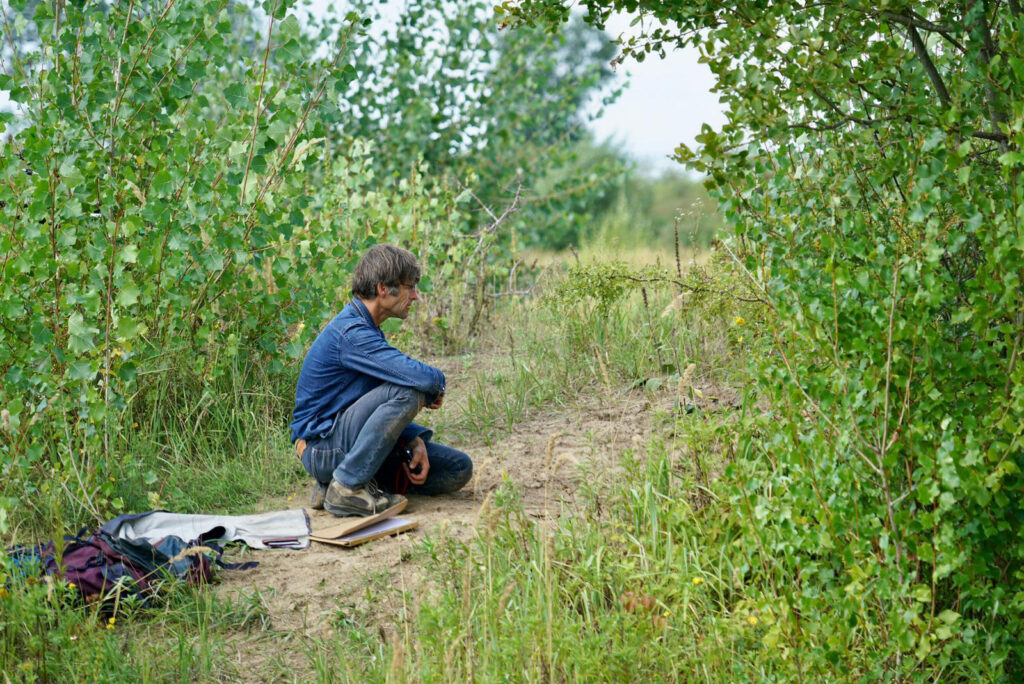
Jeroen Helmer, who has worked as a visualiser and ecological illustrator for Dutch conservation NGO ARK Rewilding Netherlands for over 30 years, has been involved with nature and rewilding from a very early age. Many of his growing collection of captivating, rewilding-themed drawings – which are equally beautiful and educational – can be found on the Rewilding Europe website and in various Rewilding Europe publications, on the ARK Rewilding Netherlands website, and an ever-increasing range of media across the world. Over the years, his artistic impressions have proven an invaluable tool for communicating rewilding, bringing natural processes and the need for nature recovery to life for huge numbers of people.
Rewilding Europe caught up with Jeroen to learn more about the background, workflow, and motivations of this uniquely gifted artist and committed rewilder.
Can you tell us a bit about your history? Have you always been passionate about nature?
Honestly, I can’t remember a time when I wasn’t drawing animals and nature. As a child I was always out in nature with my brother (Wouter Helmer, who co-founded ARK Nature and Rewilding Europe), wandering into the forest, going after the call of every songbird until we found out which species had produced it. Tracking down every animal like hunter-gatherers, but without the killing! We then joined a youth association that was all about nature – we studied butterflies, birds, dragonflies, plants – anything that was interesting.
Later, when ARK Nature was founded in 1989, I was just finishing art school and helped out straight away with report design. I gradually moved into illustration, and this became my real profession. I wanted to show people how rewilding and natural processes work – particularly with regard to keystone species – but this proved really difficult using photos, because typically there are only ever a maximum of two species interacting in a photographic image.
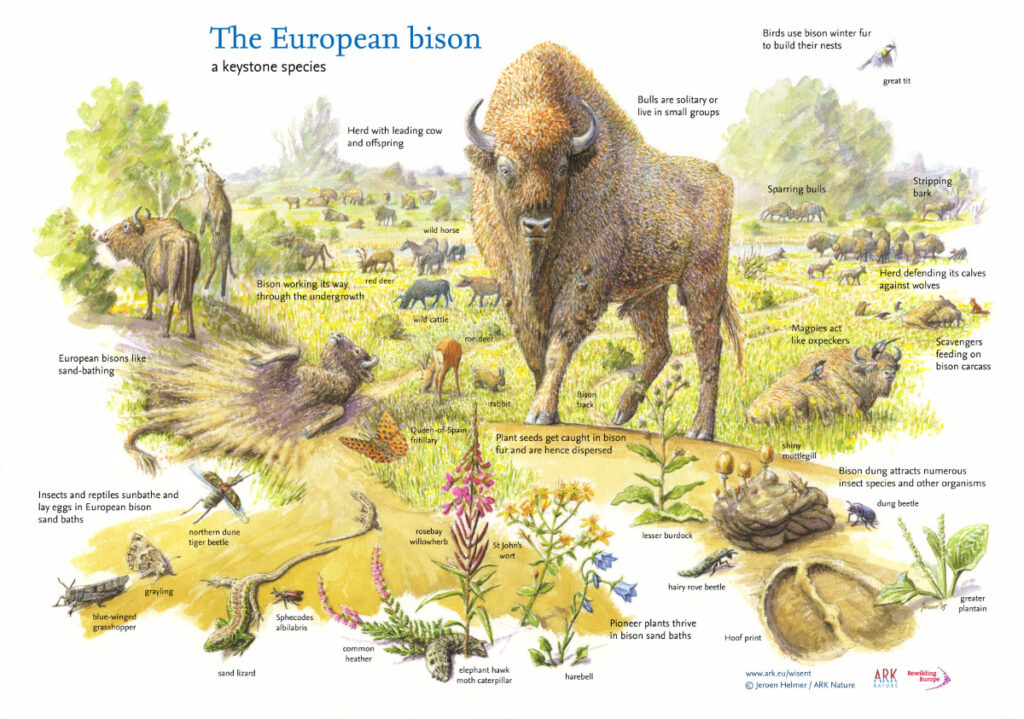
So, I started to make drawings centred around species such as the wild boar, wolf and European bison, to explain how these species influence landscapes and ecosystems. Often people don’t have time to read a long and complex report – I’d like to think my illustrations allow people to grasp how nature works in just a few minutes.
Gradually more and more people began to be enthusiastic about and use these drawings, and then I received even more exposure when Rewilding Europe was founded in 2011. Today my drawings have been translated into 12 languages, from Polish to Portuguese. Even people in India are interested in making a translation!
Many of my illustrations can be downloaded for free through the ARK Nature website.
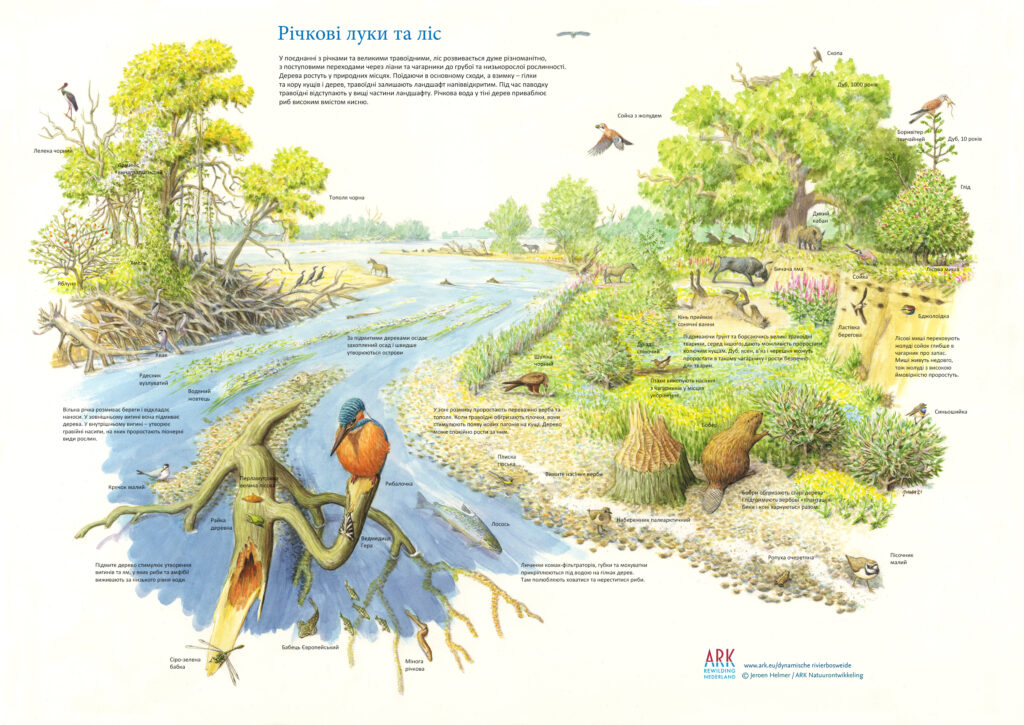
How do you go about creating an illustration?
It’s a multi-stage process that can take anywhere between 50 to 100 hours.
Initially, I select a keystone species, such as a wild boar, or an important natural process, such as the development of a mobile forest. I start with just text – developing some themes that I think are important, and which I check with my colleagues and external specialists and scientists.
Then I start the drawing. I gather together all the relevant sketches that I have made of individual species in the past – I have a really large archive of all my sketches. For example, I have a drawing of a tawny owl that I made all the way back in 1981. I always keep these sketches because they could come in useful. And it’s always important to use your own pictures.
I start adding these sketches together, creating a landscape in which all of these species have a place. I also introduce texts that I think are important, describing what’s happening in various parts of the picture.
Finally I take the drawing over to a light table, which shines light through the sketch, and transfer it to Aquarelle paper. I continue adding details and colour, darkening some areas to show how light falls, and ensuring the text is readable. I may add or remove text, depending on how “busy” I feel the drawing is. Eventually I’m satisfied and the final picture is born.
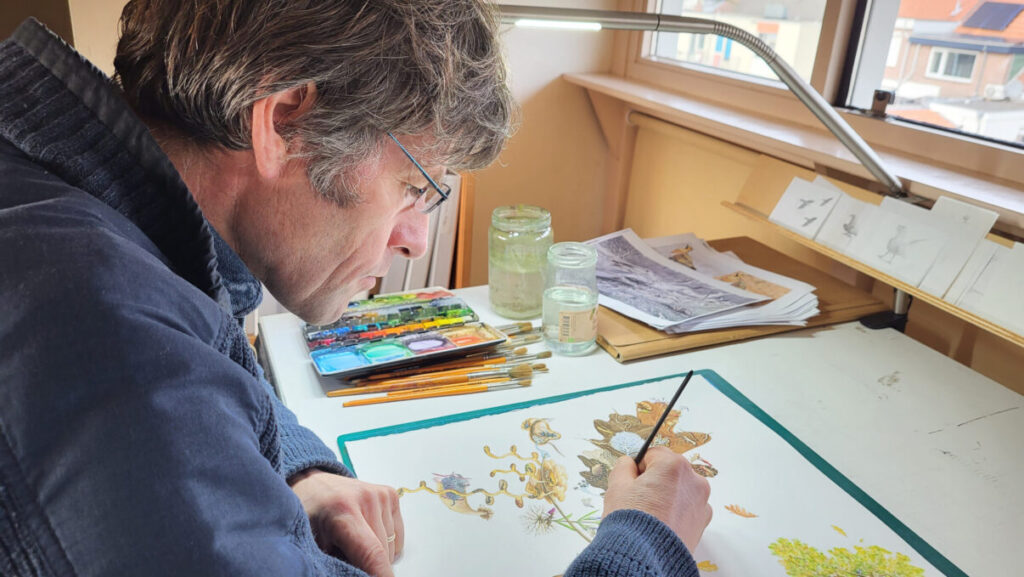
What have you been working on recently?
Actually I’m not only an illustrator. I also give regular lectures to students on forests and nature management, using my own pictures to tell stories. I’ve recently created pictures for a book on practical rewilding by Charlie Burrell and Isabella Tree, which will be published in the spring. And I was also involved in the GrazeLIFE initiative, looking at beetles and dung. You could say I really stuck my nose deep into the shit! There’s nothing like sitting next to a fresh cowpat for hours and simply observing what’s going on.
Last but not least, I’m about to start working on an illustration for Rewilding Europe’s Iberian Highlands rewilding landscape – the latest to join the initiative’s landscape portfolio. I’m really looking forward to this.

Do you have a favourite drawing?
This is very difficult – you’re asking me to chose between my children. But I really like my most recent drawing about the soil. It was actually an experiment, as I wanted to assume a perspective from below, to show all the natural processes at work. The problem is, when you choose that perspective, there’s only soil, so you can’t see anything. So I decided to draw everything but the soil – this way the ground becomes a glass sheet on which everything stands, and the burrows are just freeform in the sky. I think the drawing helps to visualise the myriad connections between animals, plants, fungi and bacteria. The illustration has had over 16,000 views on Twitter, so I think it works!
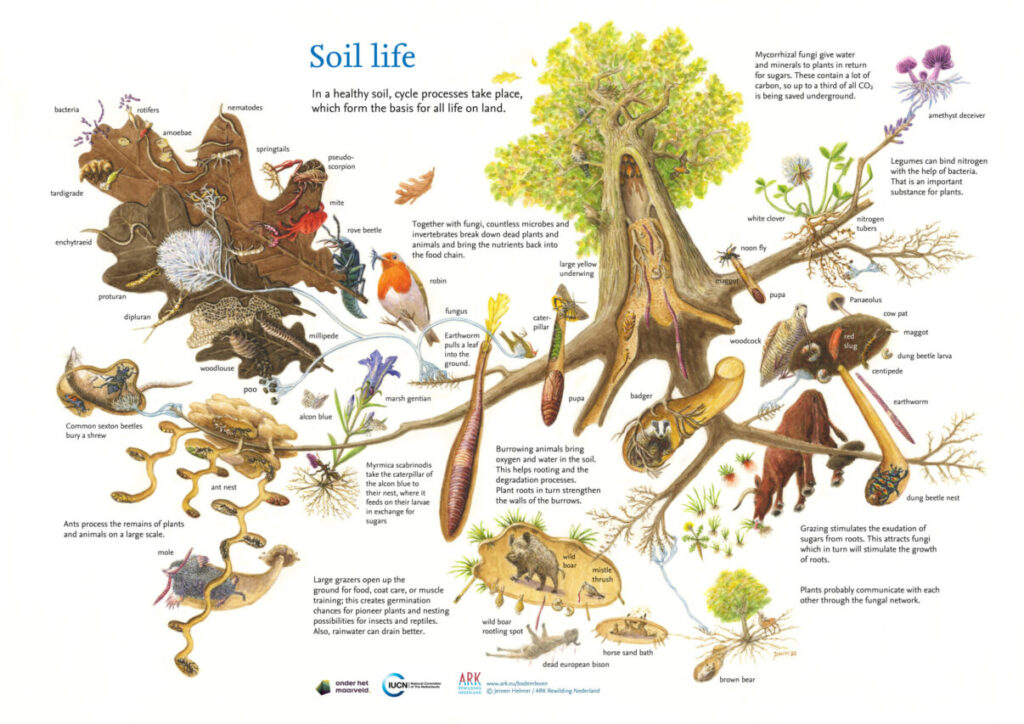
What are your views on rewilding?
In my opinion, rewilding represents the future for how we will manage (or not manage) nature. As humans, we need healthy nature just as much as nature needs us, and rewilding is best way of enabling nature to recover. And I firmly believe rewilding should be accessible to everyone – that we should start rewilding and nature recovery on people’s doorsteps in cities. We need to put nature back into everyone’s lives.
There’s a lot of hypocrisy in the West with regard to nature. I like to take the example of Tanzania and Norway. Tanzania has 67 people per square kilometre and a GDP of around $60 billion. Norway has 15 people per square kilometre and a GDP of $400 billion. Yet while Tanzania is home to 15,000 lions and 60,000 elephants, the Norwegian government declares that six packs of wolves in the entire country is enough, and licences the killing of every other animal. Can you imagine the outcry if Tanzania declared that six herds of elephants was enough, and killed the rest? We really need to prioritise nature more and seriously scale up rewilding in Europe.